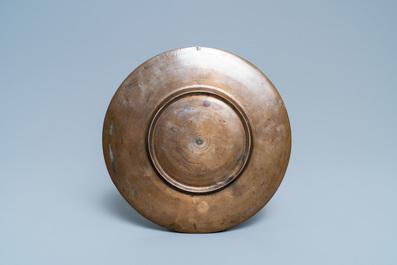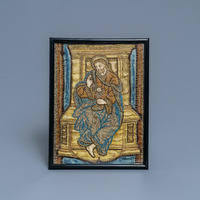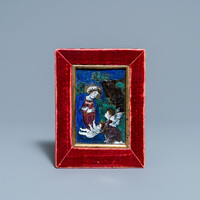We have to double-check your registration and make sure this is not an automated entry in our system. Please complete the test below...
A German bronze commemorative dish for the Holy Roman Emperor Ferdinand III, Nuremberg, 17th C.
Dia.: 18,5 cm
The inscription around the central medallion reads 'FERDINAND: III. D: G. RO: IM: SA'.
On the back, a monogram 'MCG' is engraved which might be attributable to Caspar Gras (1585-1674). The CG being obvious, the M might refer to Bad Mergentheim where he was born and where he worked at the court of Archduke Maximilian III.
German-born sculptor Caspar Gras was one of the finest metalworkers of the 1600s in Northern Europe. After learning the craft of goldsmithing from his father, he became an apprentice embosser at the court of Archduke Maximilian III in Bad Mergentheim. By 1610 he was promoted to Court Embosser and soon received most of the court's commissions. These included not just relief sculpture, but also life-size figural works, equestrian statues, and fountains.
Gras also created many Kunstkammer pieces, which generally were small-scale works designed to be incorporated into a collector's accumulation of precious and virtuoso art objects. He was now considered one of the most renowned bronze sculptors in the Tyrol, the Alps of western Austria. Yet, the death of Emperor Leopold V in 1632 and the Thirty Years' War left the area in a severe financial depression, so Gras received few commissions in his later years and is primarily known from his earlier work. (source: J. Paul Getty Museum)




